How to use Songs in Nutcracker Ballet: 5+ Engaging Music Activities
Songs in Nutcracker Ballet make for some of the best music activities. This one-holiday favorite is packed full of fun ways to engage your music classroom with the variety of exotic music sounds to hear plus Nutcracker the story is heartwarming to share. There are plenty of ideas to build a month of music lesson plans from The Nutcracker Ballet.
Tchaikovsky composed the music for The Land of Sweets to be a musical taste from around the world. The songs represent the country of origin from where the sweet treat was grown. It’s a music journey to places such as Spain, Arabia, China, and Russia. He weaves in instruments of particular countries such as castinets for Spain and scales or modes to represent foreign territories.
Songs in Nutcracker Modern Instrument: Celesta
Who is your favorite music composer? Tchaikovsky is my choice. I was first hooked in by his “1812 Overture” and the use of cannons as an instrument to commemorate victory! In The Nutcracker, Tchaikovsky found a modern instrument, just invented to use in “Dance of the Sugar Plum Fairy.” In fact, he was among the first to use the celesta instrument in a major music work.
Your students may know the sound of the celesta from “Hedwig Theme” A celesta musical instrument is a combination of a piano and a glockenspiel with a mystical heavenly bells sound. Create a musical hide-and-seek to have students find the song from the ballet that uses the instrument. Or tap into their creative thinking skills by asking thought-provoking questions varied and appropriate for each grade level:
- What does the sound make you think of?
- Why do you think Tchaikovsky chose this instrument?
- Compare and contrast the use of the instrument in Tchaikovsky’s song and John Williams’s composition.
What is the Nutcracker Story?
Reading stories is so delightful for kindergarten and 1st-grade students. You can establish a wonderful tradition of reading Nutcracker the story to these younger grades. I found using the songs in Nutcracker Ballet as a beautiful background track while you read makes the story even more enchanting.
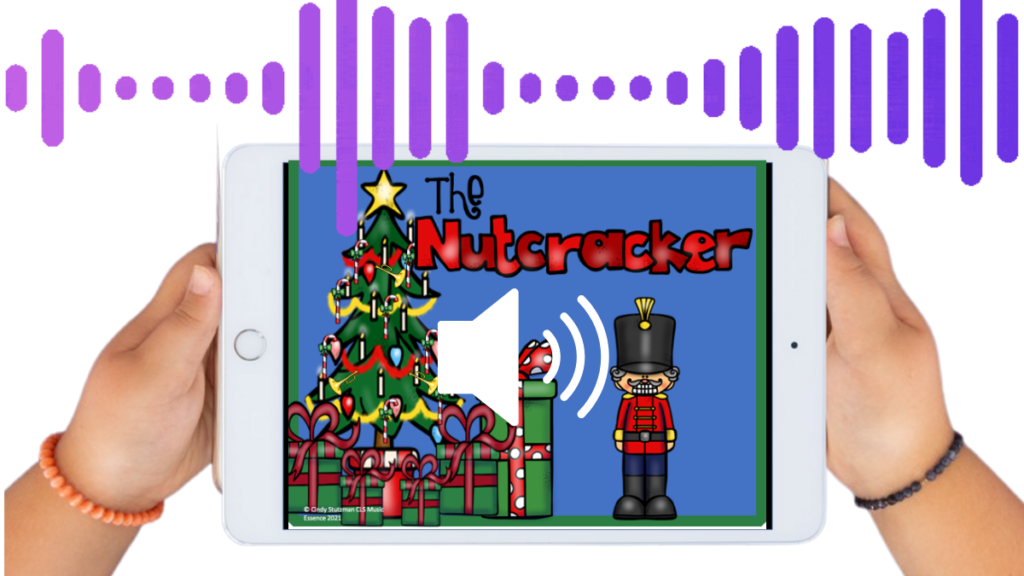

Save Your Voice
If you have ever suffered from vocal fatigue, giving yourself some vocal rest is so important. I found I could save my voice by recording the story and using the recording with each class year after year. I created both the book and a dramatic reading so I could save my voice and be able to use the Google slide presentation each year. I still keep the songs in Nutcracker ballet going from my phone or another classroom device as students watch and listen to The Nutcracker story unfold before them. Click here to see more winter music song ideas for the music classroom.
Movement to Songs in Nutcracker Ballet
Once students have finished the story, I introduce activities for songs in Nutcracker ballet. For younger grades Kindergarten through 2nd I like teaching The Nutcracker with movement to music. This is especially great to spark their imagination and get them up and moving. I use movement scarves or ribbons and give them opportunities to lead each other in a creative interpretation of the music.
First I model for them to follow me and then let them work in pairs or small groups to take turns being the leader and have their group or pairs to follow them. Let students move their scarves freely without the need for strict choreography.
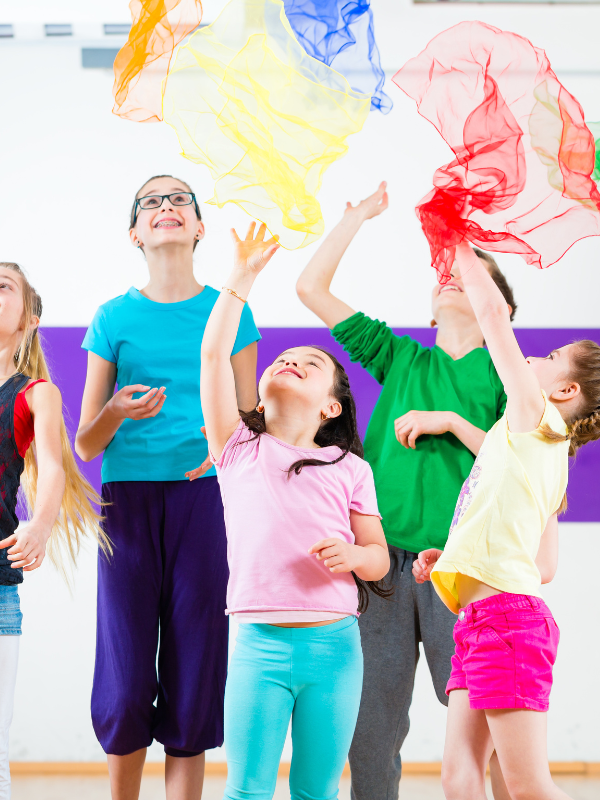

I have to say our favorite way to end a song is to throw the scarf up in the air and let it float down on top of your head. It gets them standing very still at the end of a song as they attempt to keep it on their head, and then you will hear “Can we do it again?”
Yes, repeat often with different songs. Even break out those stretch bands or a parachute to accomplish group interpretations or to show the form of a song. The Trepak is perfect to show a a melodic contour of highs and lows and dramatic zig zags back and forth. Add a jingle bell in the parachute for steady beatkeeping.
Music Listening map for songs in Nutcracker Ballet
Music listening maps are great for increasing focus and paying attention while listening to songs in Nutcracker ballet. Music listening maps are a wonderful tool to represent the elements of music. They can be created to demonstrate form, rhythm, dynamics, and instrument texture. The Arabian Dance has dramatic dynamics of forte/piano, and a slow tempo so it is one I recommend using. The sprinkled sound of a tambourine is fun to hear and easy to follow if you include instruments in your map.
You can introduce instrument families by showing the woodwinds and strings that are easily heard throughout. Be sure to indicate where the map begins and ends so students can easily follow along. A footprint or shoe is a great way to “walk” your students through the piece.
Bucket Drumming to Songs in the Nutcracker Ballet
Well, I’m not sure Tchaikovsky would have imagined playing a bucket with his music, but it is so much fun! By far my favorite songs in Nutcracker ballet to drum with whether it is a tubano, djembe, conga, or bucket drumming is “Dance of the Sugar Plum Fairy.”
I teach it in a circle with precise sticking patterns for the right and left hands. By listening to the song it is easy to hear the 10 music rhythm patterns of te-te-tah, quarter and eighth notes. A shorter version of 7 patterns is possible by stopping the song around 1:45. There is a pause before the tempo change that sounds like an ending. The first two music rhythm patterns repeat in the song making this a great place for variation.
Have students sit in a circle so sticking patterns can be played to the right or left on their neighbor’s drum. This is a highlight for all! Turn this into an amazing show-stopper for a performance or concert. Instead of a circle, you can use a half-circle shape and add extra drums on either side. Or, have the students on the ends do some air drumming.
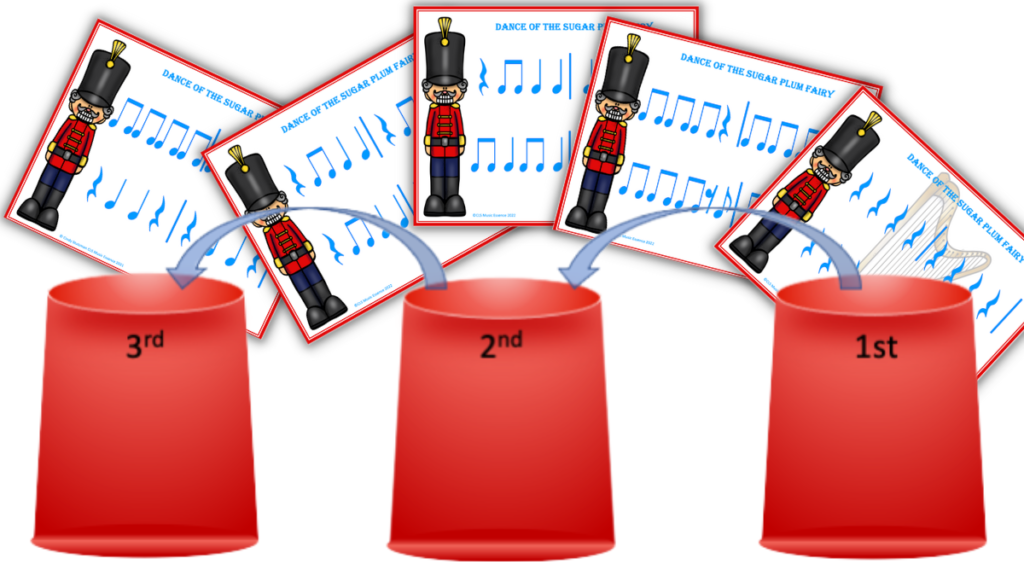

For younger elementary students you can easily add steady beat playing and eighth notes to several songs in Nutcracker ballet. Tchakovsky’s Chinese Dance for Tea is a great example of this. Use rhythm playing cards to help students switch between quarter and eighth notes. Students can be divided into two groups alternating turns and then switch groups. See the freebie above to grab rhythm cards.
Music Escape Room for Songs in Nutcracker Ballet
If you teach multiple grades through middle school, a music escape room is my go-to choice to teach songs in Nutcracker ballet. A music escape room also makes a great reward after a performance. They are a creative way to engage with music history and retain information. Students can work individually, in small groups, or as a whole class.
First compile a reading packet that would include music vocabulary, history of the celesta musical instrument, Tchaikovsky Bio, and songs in Nutcracker Ballet program notes. Music worksheets that relate to the reading material make great escape tasks and also help students to interact with new material adding to memory retention.
Finally, create a decipher clues for students to collect after each task and that will work together to form a final escape question. You can see a completed music escape room for Songs in Nutcracker Ballet here.
Songs in Nutcracker Ballet Games and Extensions
To extend learning through the month of December pick a different ballet dance each week or class. Find high-quality presentations from professional Ballet Groups. The Royal Ballet or New York City Ballet have great choices to watch.
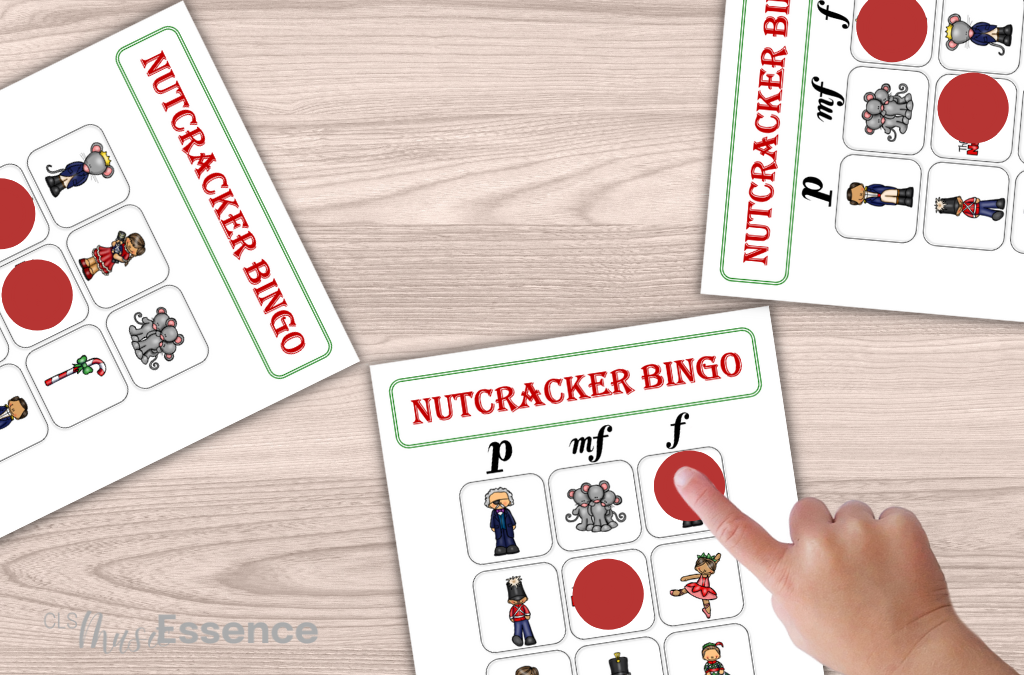

You can also play The Nutcracker Bingo using dynamics and music notes as the heading. “Under the quarter note find the Mouse King,” or “Under the forte find the Sugar Plum Fairy.” Coloring pages are great for reviewing music theory from songs in The Nutcracker Ballet, or word searches to remind students of the plot, characters, and composer are great for sub plans too.
I hope I sparked some fun ways for teaching from songs in The Nutcracker Ballet. If you want to see some finished products they are listed below.
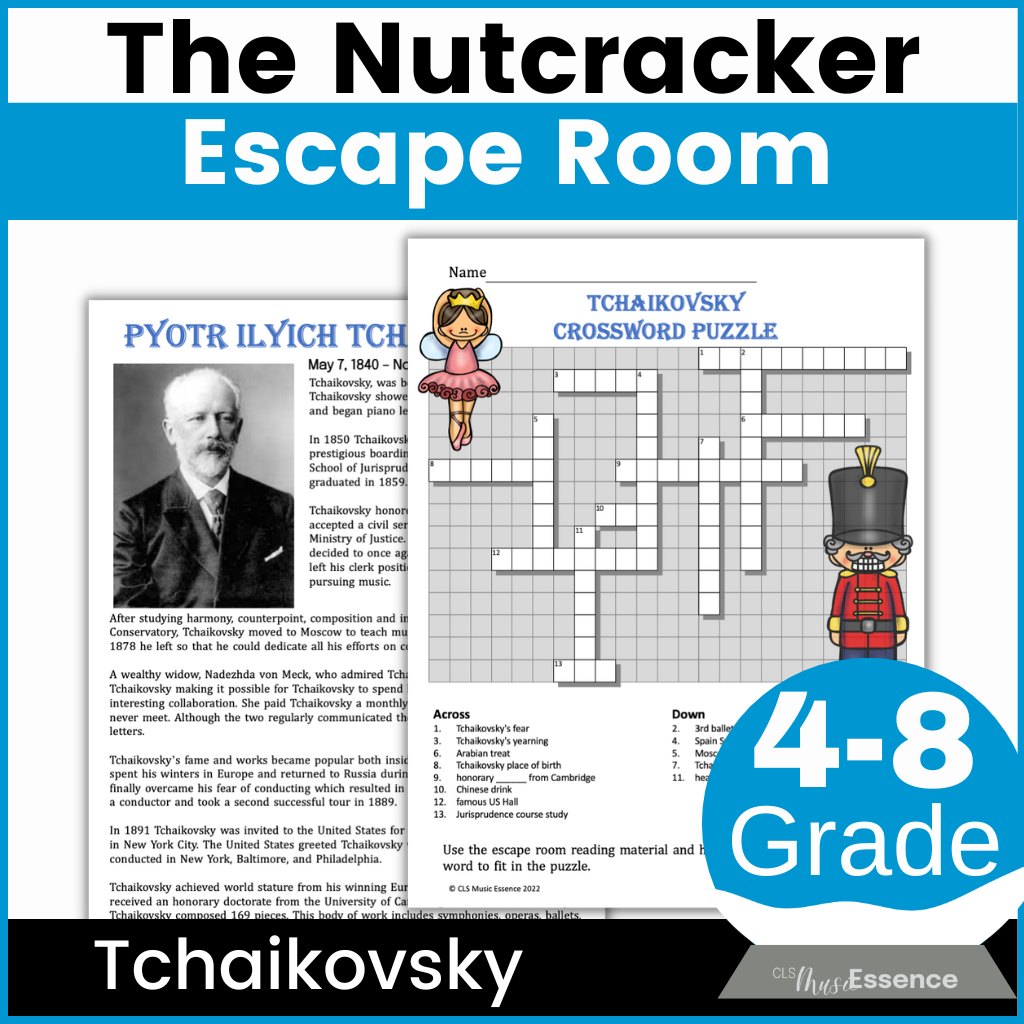

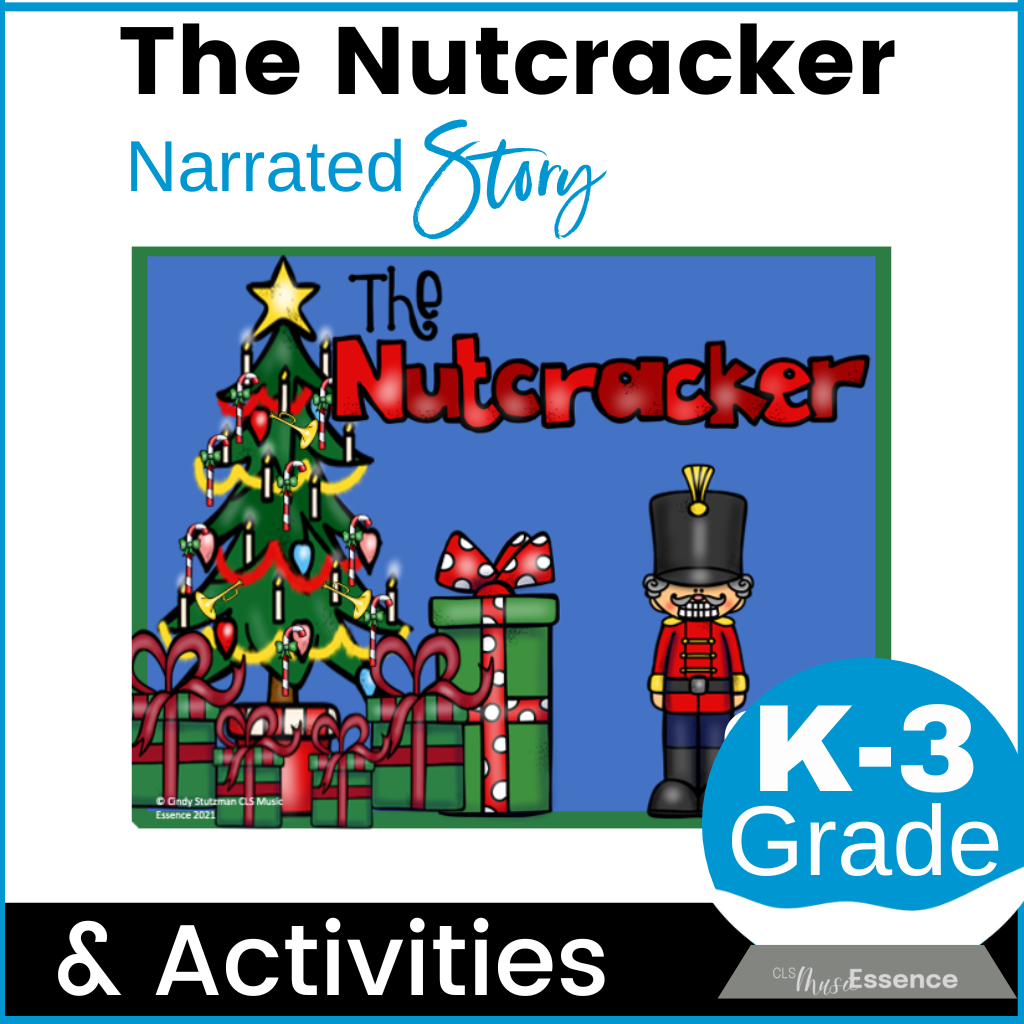





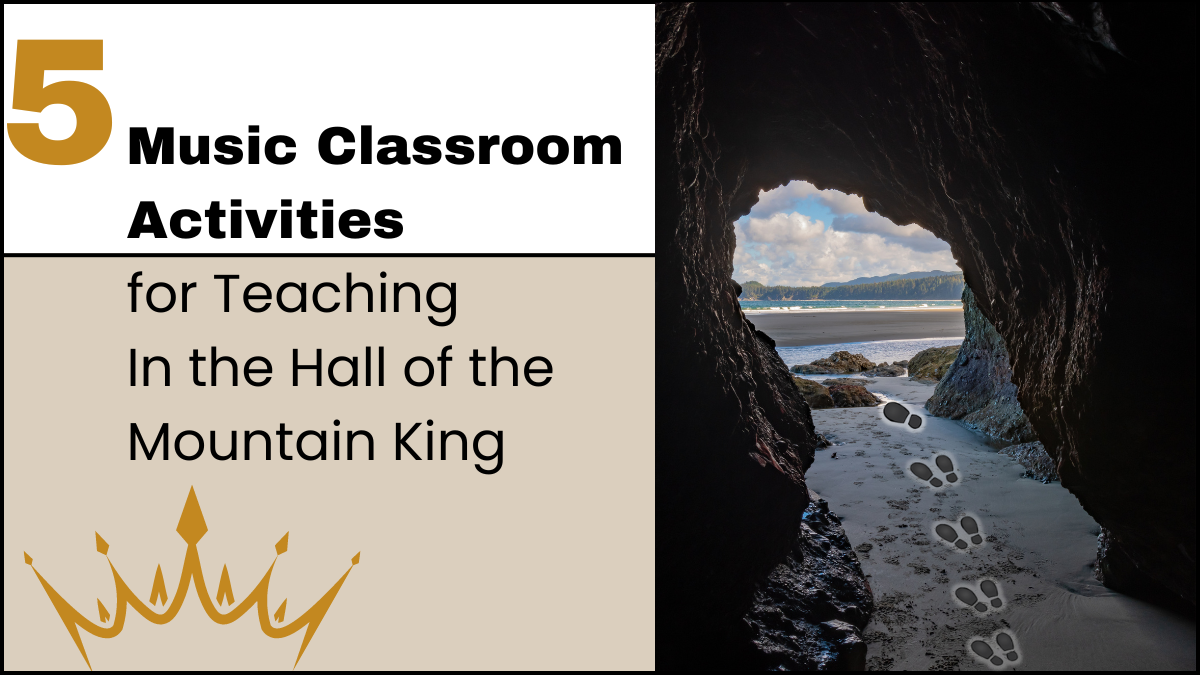
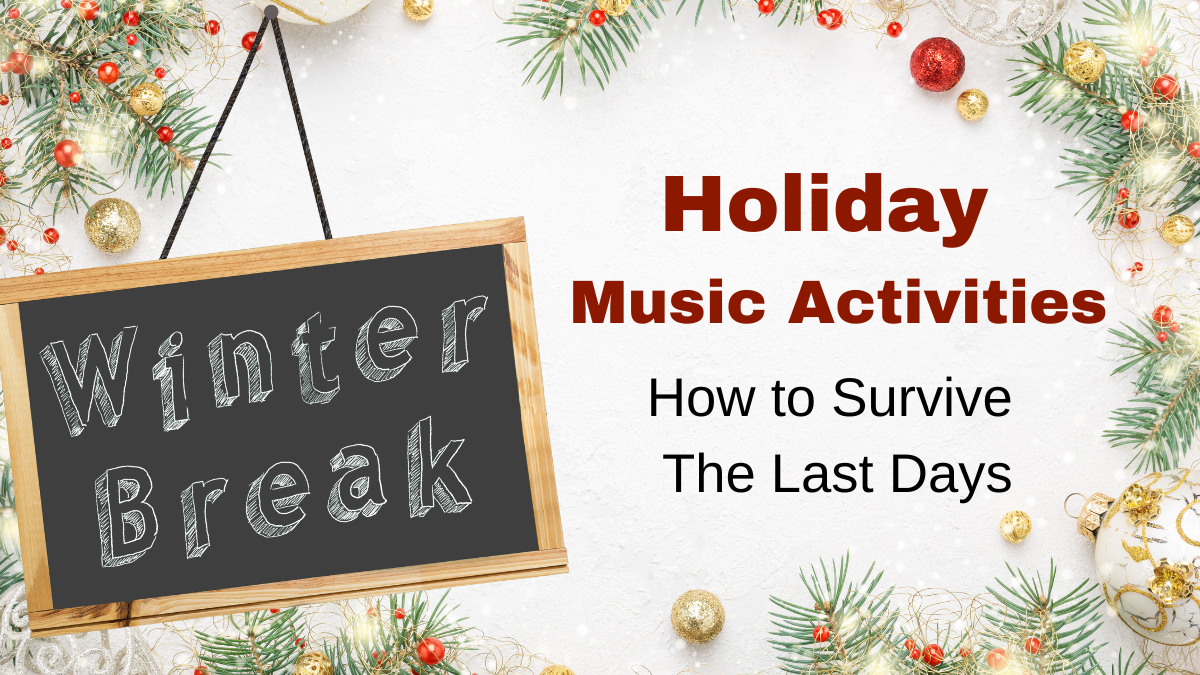
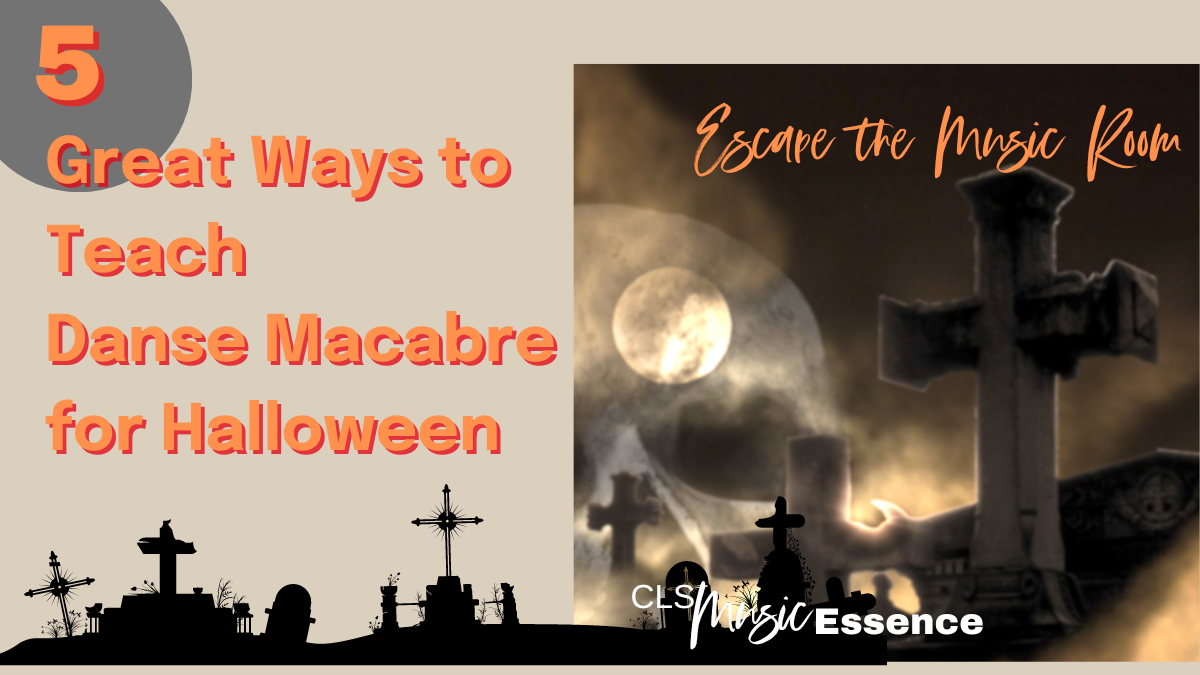
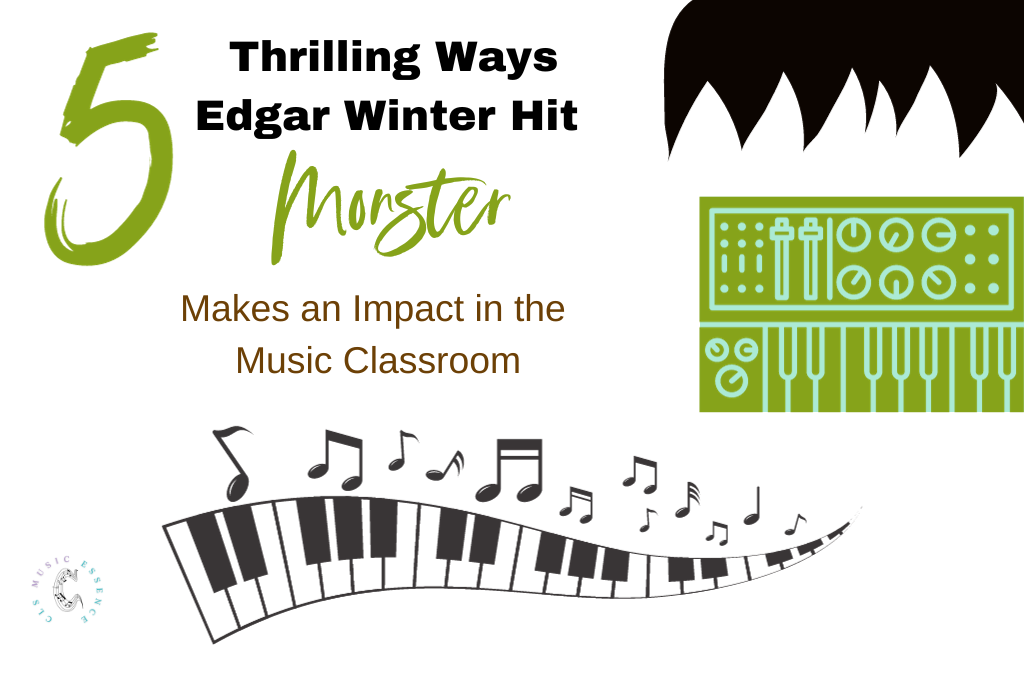

3 Comments